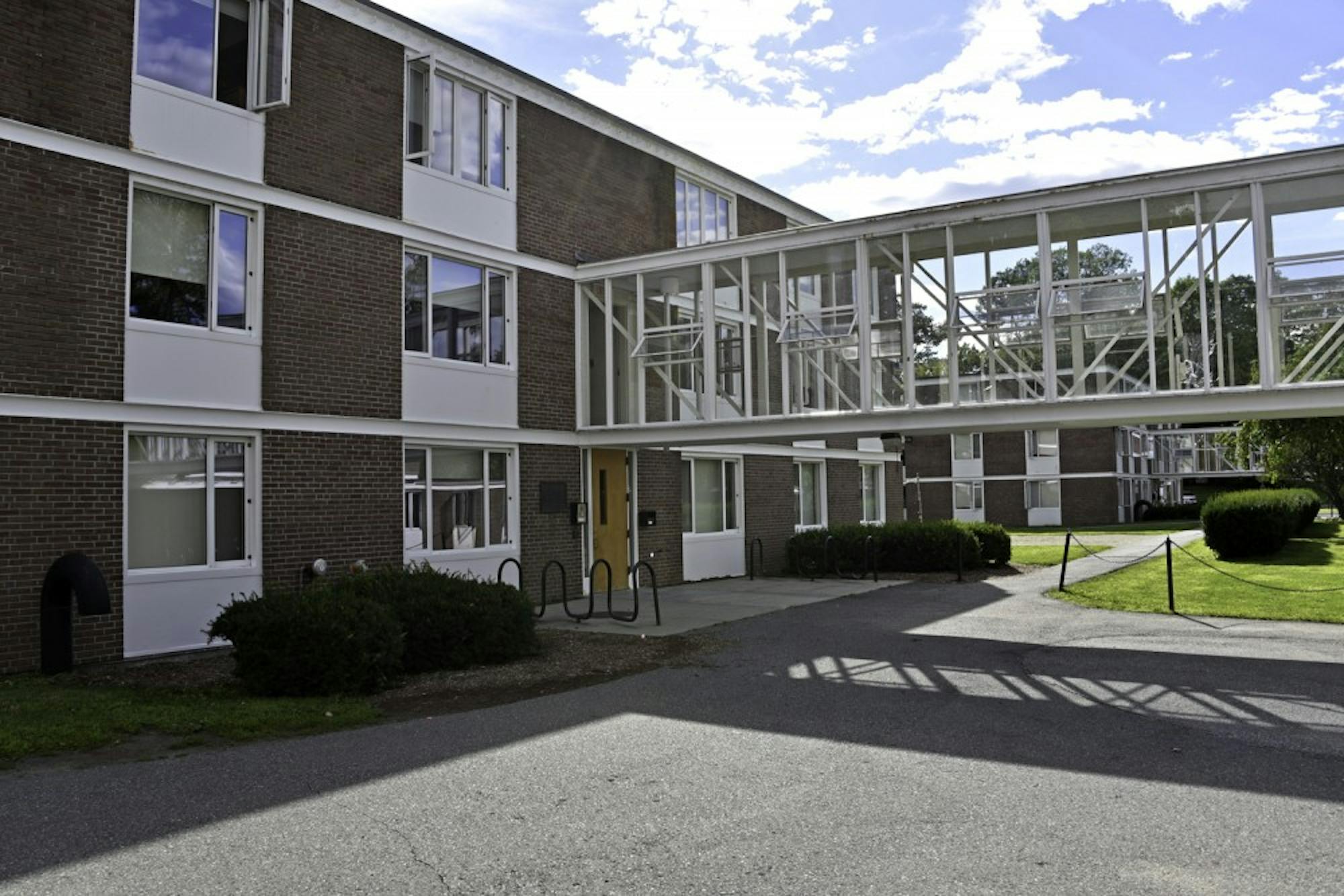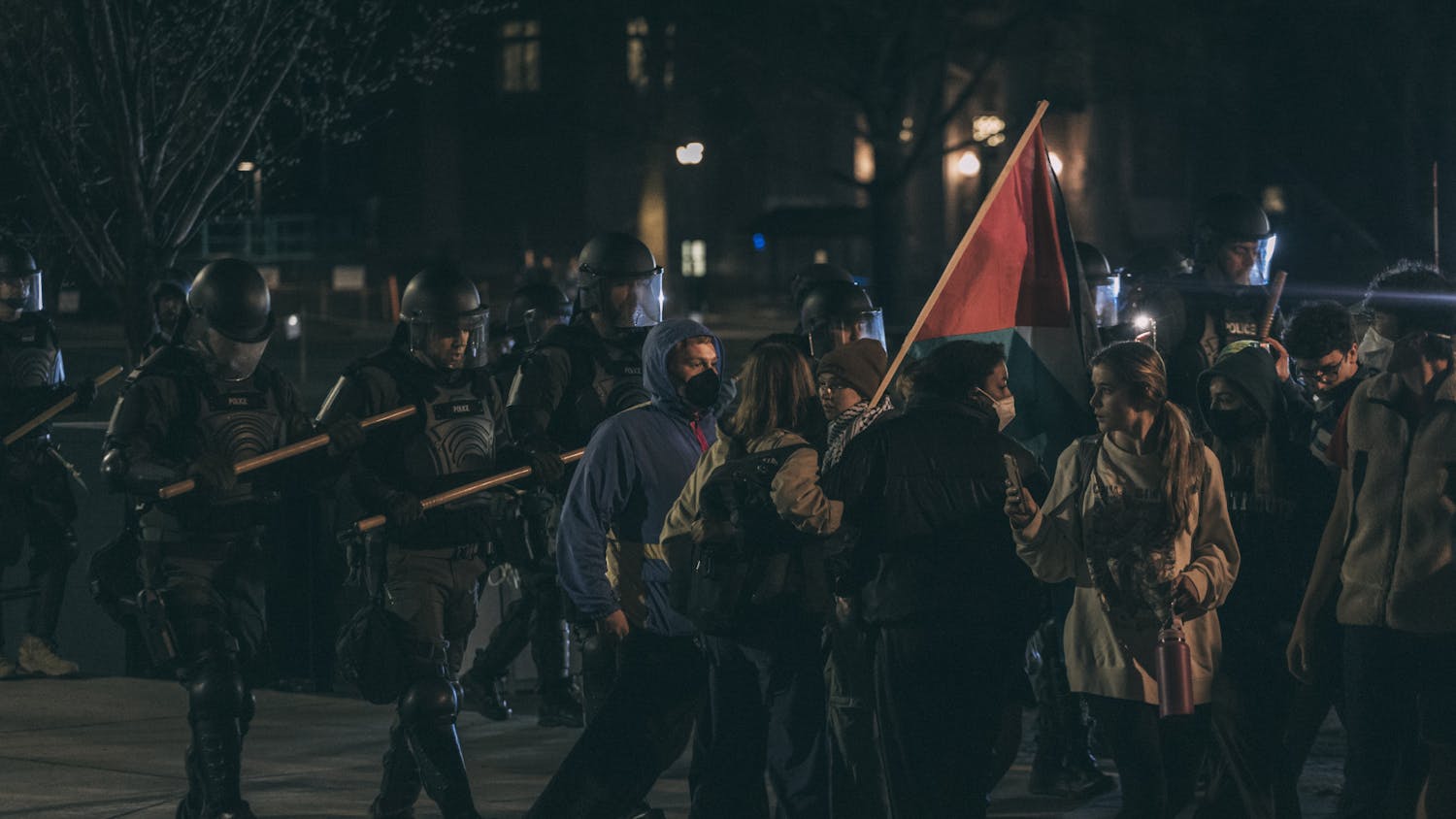This article is featured in the 2024 Freshman special issue.
As the College welcomes the Class of 2028 to campus this fall, more than 1,600 new students are moving into housing designated for first-year students, from the River cluster to the Choates.
The residence halls occupied by freshmen have historically been chosen with “community spaces” and incoming class size in mind, undergraduate housing director Rachel Class-Giguere wrote in an email statement to The Dartmouth.
“We consider factors such as building size and room types to ensure we have the right number of beds for the incoming class,” she wrote.
Some residence halls — including the Choates cluster, located on Choate Road near Occom Pond, and the Engineering Drive-based River cluster — have been used as first-year housing for more than 20 years “because their design encourages a strong sense of community,” Class-Giguere wrote. Buildings in both clusters — Bissell, Brown, Cohen and Little Halls in the Choate cluster and French and Judge Halls in the River cluster — will be used for the Class of 2028, she wrote.
Other residence halls, however, are newer additions to the first-year line-up. The planned two-year renovation of the Fayerweather Halls — a trio of historically freshman-oriented residence halls — will place first-years in buildings they typically have not occupied in the past, including New Hampshire and Rauner Halls, Class-Giguere wrote.
Additionally, Andres, Gile, Russel Sage, Topliff and Zimmerman Halls will function as mixed-class residence halls, according to Class-Giguere. First-years typically live in freshman-exclusive living spaces, Class-Giguere wrote.
Although designated first-year housing may feel like a quintessential element of freshman year, the concept is relatively new, according to Rauner Special Collections librarian Morgan Swan. In an email statement to The Dartmouth, Swan wrote that freshman-only housing has “not been around for a long time.”
Swan explained that the College began playing with freshman-only residence halls in the early 2000s after the “Board of Trustees called for a single-class residency experiment for half of freshmen students.”
According to Swan, the Office of Residential Life designated the River cluster and alternate floors in East Wheelock as freshmen-only living spaces for the Class of 2004.
“By 2010 ... most if not all first-years were living in the Choates cluster, the River cluster, the Russell Sage cluster or the East Wheelock cluster,” he wrote.
Traditionally, the College designated a number of rooms in each residence hall for incoming freshmen in order to “integrate them more fully and quickly into the larger student body,” according to Swan.
“This also meant during the early 20th century that all incoming freshmen were subjected to several weeks of hazing at the hands of their new dorm brothers,” Swan wrote.
Eventually, the housing system began to integrate more freshman-oriented buildings. Since students tend to live in nicer residences as they gain seniority, freshman housing is typically spare, according to Swan. Tom York ’06 lived in the Choates cluster the summer before his freshman year, as a Dartmouth debate camp counselor. When his freshman year officially began, he moved to Hinman Hall, later torn down in 2006, in the River cluster. York described both residence halls as “pretty spartan,” though he added that he ultimately enjoyed the experience.
“I think it did create a sense of camaraderie being in the River and the Choates, because it is all freshmen,” York said. “You make good friends with the other River dorm mates and all of that. I think most people were fine with the experience.”
York added that, in terms of design, the River and Choates residence halls had “none of the charm … of all the other dorms.”
“I felt like [the] buildings could be anywhere, and they felt so out of place being on campus,” he said. “But they were fine. You got by.”
According to Swan, the Choates and River clusters were built in the late 1950s and early 1960s, respectively, to “meet the increase in student enrollment that occurred during the post-war 40s and never diminished.” According to a November 1961 Dartmouth Alumni Magazine article, enrollment increased from 2,359 in 1940 to 2,979 in 1961, marking the “largest total [of students] in Dartmouth’s history” at the time — and falling just shy of the Board’s 3,000-student capacity for the College.
In addition to increasing capacity, the Choates cluster also aimed to update Dartmouth’s residence halls, Swan wrote.
“The Choate cluster was introduced in 1958 as a new concept of dormitory living that centered on student residential suites and integrated faculty residences instead of single- or double-occupancy rooms,” he wrote. “They were touted in the 50s as an integral step in a major program to modernize and improve Dartmouth’s undergraduate dormitories.”
The River cluster, completed in 1962, was meanwhile designed to house World War II veterans studying on the G.I. Bill, Swan wrote.
Since their post-war era construction, the residence halls have received minimal refurbishment, according to Swan. Swan wrote that the age of residence halls in the Choate and River clusters are likely affecting their quality.
“My suspicion is that those dorms have simply deteriorated over time without [the] benefit of renovation and that their aesthetic has aged poorly as well,” Swan wrote.
While some students believe the Choate and River clusters were initially built as temporary housing, Swan wrote that he had not “discovered anything in the archives that would indicate either cluster was considered temporary.”
According to Kaya Sena ’26, who lived in Judge Hall in the River cluster during her freshman year, the building had been in an unstable condition.
“One time I was taking a shower, and all of the tiles fell off of the shower randomly, and that was very scary,” Sena said.
Nonetheless, Sena said she “didn’t have such a problem with the building” except for that one occasion and mentioned that there are plenty of benefits to living in the River residence halls.
“I feel like I had the best of both worlds because I had the built-in friend of a roommate while also having my own space because it was a two-room double,” Sena said. “My happiness about that and not being in a room in the Fayes or Richardson outweighed the rumors that it was terrible.”
Sena said she was glad she was not placed in the Fayerweather Halls because she had heard the buildings were more social and featured two or three people living in a single room — which would have prevented her from getting “a lot of alone time.” She said she enjoyed going to the Fayerweathers to “hang out” before heading back to her own room to rest.
According to Class-Giguere, there have been “many changes” to the housing system over the past few years, with more adjustments slated to cater to evolving student needs. The College’s renovation of the Fayerweather Halls, for example, is among those developments.
“As the renovations of residence halls continues, the designs include features students want — such as more common spaces (study rooms, wellness features, etc.) and elements that help bring the community together,” she wrote.
York said students should come to campus — and their first-year housing — with an “open mind,” given how formative those spaces can be.
“Recognize that Dartmouth has so much to offer and so many viewpoints and perspectives that you as a freshman have never seriously considered or maybe even come across before,” York said. “Keep an eye.”




